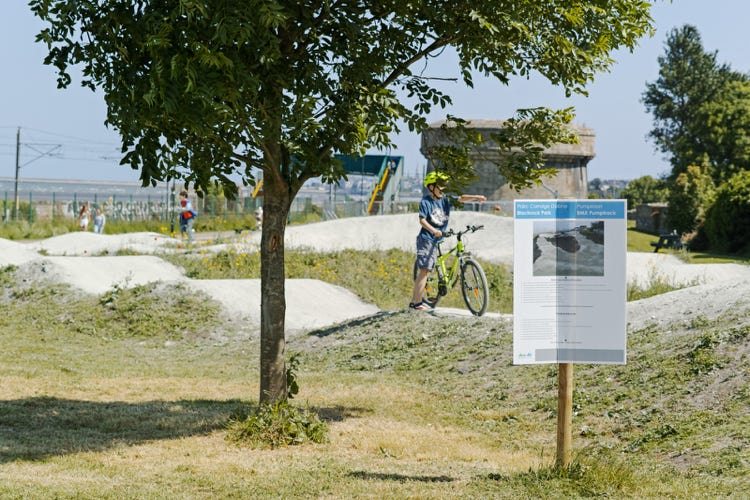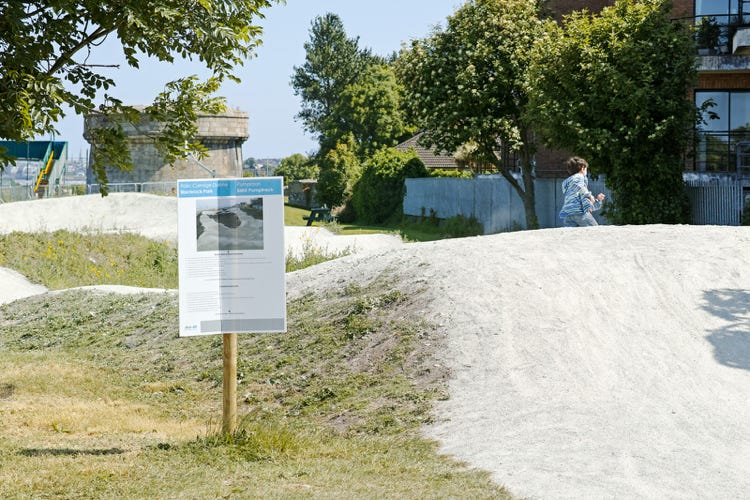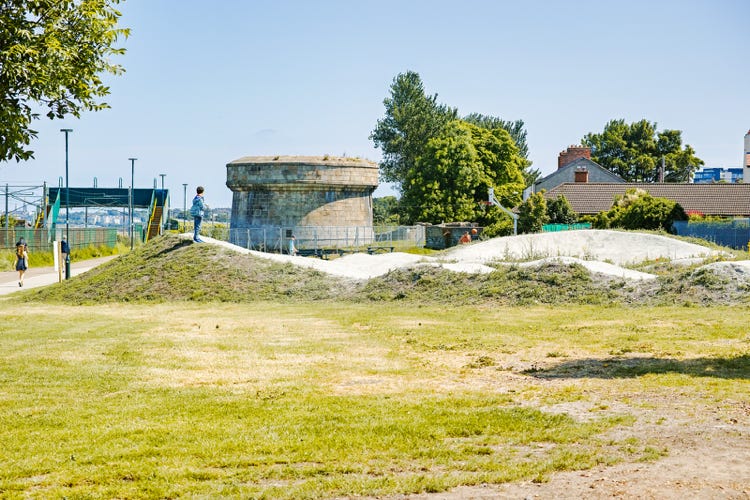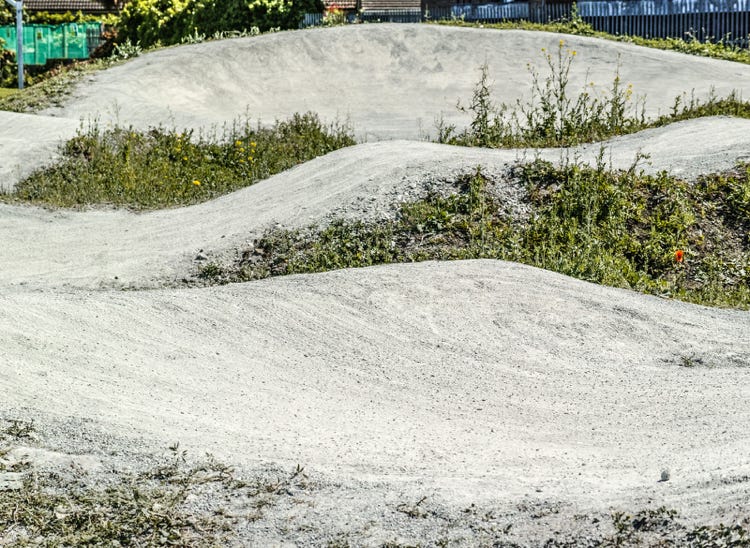The Williamstown Martello Tower, located in Blackrock Park, was built between 1804-1806. When the tower was built, it would have been surrounded by sea water at high tide as it was built in the inter-tidal beach area. The tower became isolated from the sea when the construction of the railway took place, but sea water still flowed into the area at high tide. It wasn't until the filling in of the area to form the Blackrock Park that the tower was to be on dry land. That part of the tower which is visible today is actually the first floor as the ground floor is buried underground.
The tower at Booterstown was originally slightly offshore as the site had to be located to enable it to signal effectively, by flags, to its neighbouring Martello towers at Sandymount and Seapoint. A little larger in width than the norm to accommodate two guns, it was built roughly 2 kilometres from its south eastern companion tower – No. 14 – at Seapoint and 2.4 kilometres from its north western companion – No. 16 – at Sandymount.
The 1,700 metre range of its two 24 pounder cannons ensured that, in conjunction with the intersecting firing radii of its neighbours’ guns, any attacking ship could be at least severely damaged, or indeed sunk.
Currently, the tower is not occupied, but the intention was expressed in 2013 by the local authority to restore it, and thus enable it to be used by the community. This work has not yet commenced. The tower is located on a large grassed area bordered by a coastal walkway with the Dart line to its east, and can be seen to have degraded, due to the ravages of both time and vandals.
March 28 2013] A Martello tower in south Co Dublin is to be restored to allow it to be open to the public. Dún Laoghaire-Rathdown County Council will spend €100,000 restoring Williamstown Martello tower, on the coast close to Blackrock.The tower is one of 16 built along the coast between Sandymount in Dublin and Bray, Co Wicklow. The coastal fortifications were constructed during the Napoleonic era and not all are still standing. A spokeswoman for the council said conservation and maintenance works, under the direction of the architects and culture department, are currently being proposed to restore the Williamstown tower and to make it available for “exhibitions and appropriate civic uses”.
Martello towers (or simply Martellos) are small defensive forts built in several countries of the British Empire during the 19th century, from the time of the Napoleonic Wars onwards.
They stand up to 40 feet (12m) high (with two floors) and typically had a garrison of one officer and 15–25 men. Their round structure and thick walls of solid masonry made them resistant to cannon fire, while their height made them an ideal platform for a single heavy artillery piece, mounted on the flat roof and able to traverse a 360° arc. A few towers had moats for extra defence. The Martello towers were used during the first half of the 19th century, but became obsolete with the introduction of powerful rifled artillery. Many have survived to the present day, often preserved as historic monuments.






